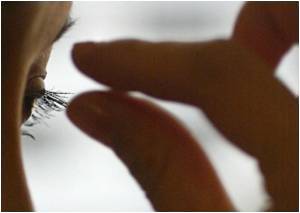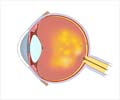Inhibiting two tiny molecules of RNA - appears to reduce the abnormal growth of blood vessels that occurs in degenerative eye disorders, find researchers.

"MicroRNAs can affect multiple pathways involved in age-related macular degeneration," said Dr. Shusheng Wang, assistant professor of ophthalmology and pharmacology and co-senior author of the study. "Therapeutic manipulation of microRNAs 23 and 27 may give us a way to treat choroidal neovascularization in patients with degenerative retinal diseases."
In the study, researchers found that silencing the microRNA cluster members miR-23 and miR-27 hindered the excessive formation of blood vessels in the back of the eye, known as choroidal neovascularization. When these blood vessels hemorrhage and leak, it creates a sudden deterioration of central vision.
MicroRNAs are tiny pieces of genetic material that can target multiple components of signaling pathways. By interacting with other protein-making molecules in cells, they help fine-tune the expression of networks of genes and control cell function.
But microRNAs also can contribute to the excessive blood vessel formation that is responsible for vascular disorders, the current UT Southwestern study shows. That's because they stimulate the growth of new blood vessels from pre-existing vessels, a process called angiogenesis, which is an important natural process in the body used for healing and reproduction.
The body usually controls angiogenesis through a precise balance of growth and inhibitory factors in healthy tissues, Dr. Wang said. When the process becomes imbalanced, however, increased angiogenesis can lead to a variety of debilitating conditions.
Advertisement
Anti-VEGF drugs, which are injected into the eyeball, have been used to give patients some improvement in vision. These drugs, however, have limited effectiveness in treating some forms of neovascular AMD, and also have potential side effects.
Advertisement
"We want to see if a combination of microRNAs and angiogenetic drugs have a synergetic effect on the progression of macular degeneration," Dr. Wang said.
Dr. Eric Olson, chairman of molecular biology, was the study's other co-senior author. Other UT Southwestern researchers involved were Dr. Rafael Ufret-Vincenty, assistant professor of ophthalmology, Dr. Qinbo Zhou, postdoctoral fellow and lead author; Rachel Gallagher, research technician; and Dr. Xinyu Li, a visiting professor.
Source-Eurekalert












